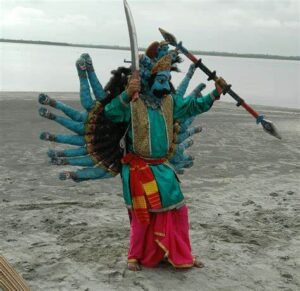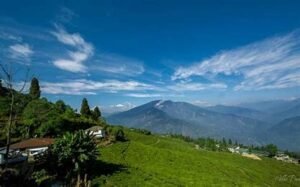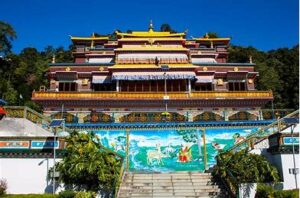Majuli Raas Mahotsav is an annual cultural and religious festival held in Majuli, the world’s largest river island, located in the Brahmaputra River in Assam, India. The festival, which honors the life and teachings of Lord Krishna, is one of the most important religious events in Majuli, attracting both pilgrims and tourists from around the world. Celebrated with great devotion and cultural grandeur, the Raas Mahotsav showcases the deep spiritual and artistic traditions of the island, rooted in the Vaishnavism philosophy propagated by Srimanta Sankardeva.
Origin and Significance of Majuli Raas Mahotsav
The Majuli Raas Mahotsav is dedicated to the celebration of Lord Krishna’s childhood, particularly his divine Raas Leela, which is a dance performed by Lord Krishna with his devotees, the gopis, in Vrindavan. The festival in Majuli is deeply influenced by the teachings of Srimanta Sankardeva, a 15th-century saint and the founder of the Neo-Vaishnavism movement in Assam. Through this festival, the people of Majuli celebrate Lord Krishna’s devotion, love, and teachings, with emphasis on Bhakti (devotion) and community participation.
The festival typically takes place during the full moon night of Kartika, in the months of October or November. The event marks the end of the harvest season and is considered an auspicious time for religious observances in Assam. The Majuli Raas Mahotsav is closely associated with the Sattras (monasteries), which are key religious and cultural centers in Majuli.
Raas Leela: The Core of Majuli Raas Mahotsav
At the heart of the Majuli Raas Mahotsav is the Raas Leela performance. The Raas Leela is a devotional dance-drama that portrays the divine episodes from the life of Lord Krishna, particularly his playful interactions with the gopis. The performance, conducted in various Satras across Majuli, is a combination of intricate dance, dramatic performances, and devotional singing, accompanied by traditional Assamese music. The dances are based on the teachings of Srimanta Sankardeva, incorporating elements of the Sattriya dance form, which is one of India’s eight classical dance styles.
The Sattriya dance is the primary form of dance performed during the Raas Leela. Dancers, usually in traditional attire, engage in devotional performances that recount episodes from Krishna’s life. Music for these performances is provided by traditional Assamese instruments such as the dhol, khol, bortaal, and bhortal, creating an immersive spiritual atmosphere.
Cultural and Religious Activities in Majuli Raas Mahotsav
While the Raas Leela forms the highlight of the Majuli Raas Mahotsav, there are several other cultural and religious activities that take place during the festival. The Bhaona is another traditional Assamese performance that is showcased during the festivities. Bhaona is a form of one-act play that dramatizes various episodes from Hindu mythology, particularly those related to Lord Krishna. The performances are conducted in the courtyards of Majuli’s Satras, with elaborate costumes, storytelling, and devotional music.
The island of Majuli itself plays a significant role in the festival, as its residents actively participate in the preparations and celebrations. From decorating homes and courtyards to preparing offerings for the deities, the entire island comes together in the spirit of devotion and unity. The festival is not just a religious event but also a cultural gathering that promotes community bonding and collective participation.
Majuli Raas Mahotsav and Community Participation
One of the distinguishing features of the Majuli Raas Mahotsav is the active involvement of the local community. The people of Majuli, including the indigenous tribes like the Mishing, Deori, and others, play an essential role in organizing and participating in the festivities. The locals engage in everything from creating elaborate stage designs to preparing the traditional meals and religious offerings.
The Satras of Majuli, which are the center of religious life on the island, are crucial to organizing the event. The monks, known as Bhoktas, lead the spiritual and cultural activities and ensure the continuity of religious practices and Assamese traditions. The festival fosters unity and a strong sense of community among the people of Majuli.
Tourism and Spiritual Experience during Majuli Raas Mahotsav
While primarily a religious event, the Majuli Raas Mahotsav also attracts a large number of tourists and pilgrims. The festival provides a unique opportunity for visitors to experience the cultural richness and spiritual atmosphere of Majuli. Tourists can witness the mesmerizing dance performances, explore the beautiful Satras, and engage with the island’s local culture.
Majuli, with its picturesque landscapes and serene environment, becomes even more enchanting during the Raas Mahotsav. The island is illuminated with lights, and the air is filled with the sounds of devotional music and festive celebrations. In addition to the religious activities, tourists can also experience Majuli’s traditional handicrafts, such as sitalpati weaving and Majuli pottery, which are integral to the island’s cultural heritage.
Conclusion
The Majuli Raas Mahotsav is a vibrant and spiritually enriching festival that celebrates the life of Lord Krishna and the cultural heritage of Majuli. It is an annual event that not only showcases the island’s religious devotion but also highlights its artistic traditions, particularly the Sattriya dance and Bhaona performances. The festival offers a unique blend of spirituality, culture, and community participation, making it an important event in the religious calendar of Assam.
For those seeking to experience the spiritual and cultural essence of Assam, the Majuli Raas Mahotsav provides an unforgettable opportunity to witness the island’s devotion, dance, and traditions. The festival continues to be a cornerstone of Majuli’s identity, drawing people from all walks of life to celebrate the divine spirit of Lord Krishna in the heart of Majuli.
Unravelling a billion untold stories, one chapter at a time, Humans of Northeast takes you on a discovery through vibrant Northeast India – a land rich in people, places, and culture. Ready to immerse yourself in more such stories? Visit our page HONEI to read more about narratives that inspire and uplift.





